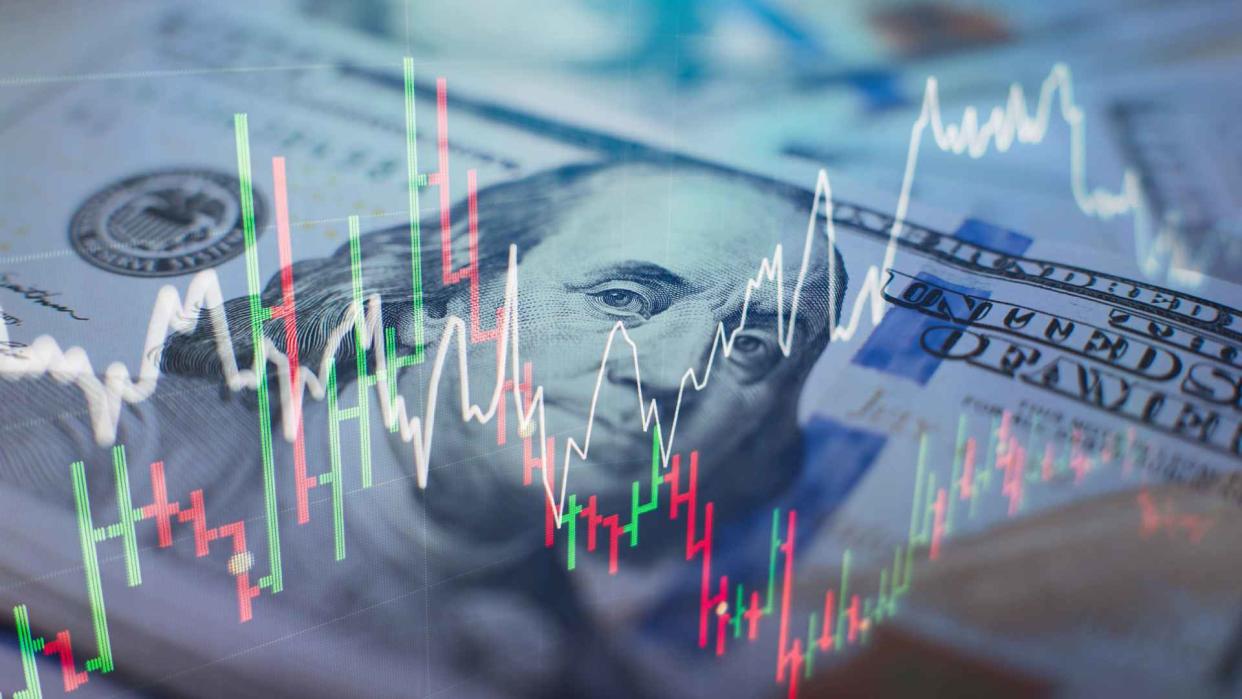
It's Not Glamorous, but This Is How Most Americans Actually Become Millionaires John CsiszarAugust 9, 2025 at 7:06 PM Maximusnd / Getty Images/iStockphoto You may be surprised to find out that about 18% of Americans are millionaires, translating to roughly 25 million individuals, according to a repo...
- - It's Not Glamorous, but This Is How Most Americans Actually Become Millionaires
John CsiszarAugust 9, 2025 at 7:06 PM
Maximusnd / Getty Images/iStockphoto
You may be surprised to find out that about 18% of Americans are millionaires, translating to roughly 25 million individuals, according to a report by Wealth Management USA. And while there are plenty of ways to accumulate a seven-digit net worth, some avenues are more common than others.
For You: Self-Made Millionaires Suggest 5 Stocks You Should Never Sell
Read Next: 6 Subtly Genius Moves All Wealthy People Make With Their Money
Many millionaires start their own business or invest in real estate to earn their riches, while others imply inherit the money. But the number one way that Americans become millionaires is actually within reach of average workers, provided they start early and stick to their plan.
Here's the "boring" path to riches that doesn't involve starting a business, investing in real estate or inheriting the money.
Trending Now: Suze Orman's Secret to a Wealthy Retirement--Have You Made This Money Move?
Consistent Investing
Want the "easy" way to a million dollars? Continually invest on a regular basis.
According to a report from Morningstar, investors who have $1 million or more in their Fidelity 401(k) accounts consistently invest, typically every two weeks or every month. They don't trade in and out of aggressive investments, like leveraged ETFs, but instead simply sock away their money on a regular basis into their "boring" investments.
Check Out: 3 Signs You've 'Made It' Financially, According to Financial Influencer Genesis Hinckley
What's the Secret?
There are a number of reasons why consistent investing is the "easy" path to $1 million. First, regularly adding money to your investments regardless of the market environment ensures that you'll get an average price. You'll be buying more stock when prices are low and less when prices are high. You won't be putting all your money in either at the absolute bottom or at the peak — but since the long-term trend of the market is up, getting that "average" price provides a significant return.
Second, by consistently investing in "boring" options like mutual funds, 401(k) funds or high-quality stocks, you won't be taking on excess risk. With automated contributions coming out of your paycheck or bank account, you won't get tempted to chase the latest investment fad, a mistake that costs many novice investors their entire bankroll. As preservation of capital is half the battle when it comes to building wealth, automatically contributing to relatively "boring" investments can help protect your bankroll over the long run.
The third reason why consistent investing works is a simple one. If you continually add money to your account, you'll have more money in it. If you simply invest $30,000 and watch it grow, you may end up with $60,000, $120,000 or even $240,000 in your account, depending on how long you keep it invested. But if you regularly add $1,000 per month to your account for 40 years, you'll have contributed $480,000. A simple double of your money over time would be nearly enough to reach that $1 million level.
How Does the Math Work?
Here's a look at the magic of compounding and how long-term, consistent investing can build real wealth.
If you can earn a 10% average annual return on your investments — which is roughly what the S&P 500 has returned over the long run — your money will double in slightly over seven years. This makes time a valuable asset in your wealth-building journey. The longer you can keep your money invested, the more you can benefit from the effects of compounding.
Imagine, for example, that you invest $10,000 in the market and earn that 10% average annual return over the following 30 years. At that point, your $10,000 will have grown to $198,374. Without doing anything, your initial investment would have grown by nearly a factor of 20.
That's some impressive growth. But if you continually added even a small amount every month, the math gets much more compelling. Imagine that in addition to your initial $10,000 you add just $360 extra per month or roughly $90 per week. Instead of having close to $200,000 after 30 years, your nest egg will be over $1 million. Adding even $100 per month will still net you about $425,000 or more than double what your initial $10,000 would get you.
Remember: Consistency Is Key
Although investing can seem complicated, it's actually not.
Plenty of people will try to sell you on the idea that you need arcane investments like private equity, options or leveraged ETFs to get wealthy, but that's not really true. Consistent investing in something as basic as an S&P 500 index fund can generate seven-figure wealth over the long run, if you stick to the plan and sock away as much as you can on a monthly basis.
More From GOBankingRates
New Law Could Make Electricity Bills Skyrocket in These 4 States
I'm an Economist: Here's When Tariff Price Hikes Will Start Hitting Your Wallet
5 Strategies High-Net-Worth Families Use To Build Generational Wealth
7 Wealth-Building Shortcuts Proven To Add $1K to Your Wallet This Month
This article originally appeared on GOBankingRates.com: It's Not Glamorous, but This Is How Most Americans Actually Become Millionaires
Source: "AOL Money"
Source: Astro Blog
Full Article on Source: Astro Blog
#LALifestyle #USCelebrities




